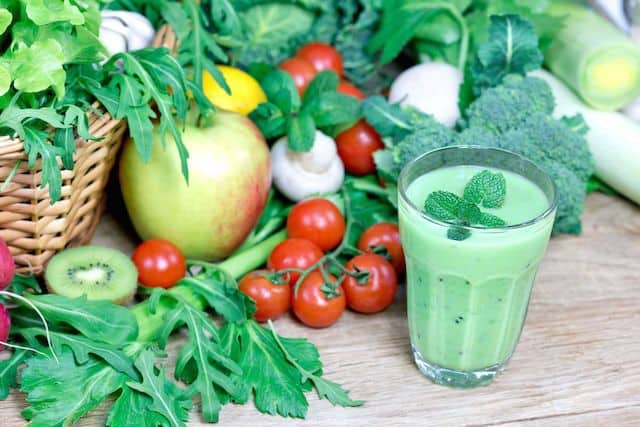Ways To Add Dietary Nitrates to Your Diet

The benefits of dark green leafy vegetables are numerous. These nutritional heavy hitters are frequently cited in scientific studies as standout foods associated with various health benefits. As part of an overall plant-based diet, greater consumption of dark green leafy vegetables has been linked to everything from better lung function to better cardiovascular health, to enhanced eye function and resistance to common eye disorders.
Scientists often cite the antioxidant pigment compounds in these foods; the so-called carotenoids. Experts attribute many of the health benefits of dark greens to these important natural compounds. But dark green leafy vegetables are also frequently good sources of dietary nitrates. Nitrates play an important role in cardiovascular health by serving as crucial building blocks the body needs to make nitric oxide. Nitric oxide (NO) is a simple molecule that works as a messenger chemical; signaling blood vessel muscles to relax, lowering blood pressure, and allowing life-sustaining blood to flow freely to all cells and tissues.
Spinach and kale are good sources of this often-overlooked—but key—nutrient. Some less obvious herbs and leafy greens typically found in the produce section of well-stocked grocery stores boast even more nitrates per unit than spinach and kale. Arugula, for example, packs in 480 mg of nitrates per 100 gram serving (about 5 ounces). Its nearest competitor, cilantro, has about half as much nitrate.
Depending on various growing conditions, spinach leaves may provide anywhere from 24-387 mg of nitrates per 100 grams. Other surprising sources of dietary nitrates include fresh basil, beet greens, swiss chard, and fresh, raw beets. While it has much to recommend it, nutritionally speaking, kale only provides about 27 mg of nitrates.
Accordingly, working more arugula into your whole foods diet can have a significant impact on your health and wellbeing. Here are some ways to add arugula and other dark green leafy vegetables to your diet.
Blend It
Add a small handful of fresh arugula to your next smoothie. The family may not even know it’s there, provided your homemade smoothies also feature fruit, fruit juices, and/or yogurt or whole milk. You can also sneak in baby spinach leaves, beet greens, etc.
Sprinkle It On
Arugula, kale, and spinach all make great additions to homemade pizza. Bake greens under topping cheese, or sprinkle greens on top during the last minute or two of cooking. Greens go well with any type of pizza, but consider trying a “white” pizza; no tomato sauce, but a simple white sauce base featuring garlic, topped with greens, including fresh basil (also a good source of nitrates) and plenty of other greens, such as arugula and spinach, topped with your favorite white cheeses, such as mozzarella, provolone, and parmesan.
Salad
Salads are an obvious choice for getting more dark green leafy vegetables into your diet. Skip the boring old iceberg lettuce, though, and choose more adventurous types of lettuces and greens. Think spinach, kale, butter leaf lettuce, oak leaf lettuce, romaine, etc. Sprinkle in a handful of peppery arugula for a pop of flavor and a relatively large dose of dietary nitrates.
Add Leafy Greens to Your Favorite Recipes
You can always work more dark green leafy vegetables into the diet by getting creative about adding these foods to your favorite existing recipes or substituting one of these superfoods for another in a favorite family recipe. For instance, spinach and arugula can be added to an omelet immediately before folding over and serving. Parsley can be added to just about anything to add a bright citrus-like note.

Casseroles, soups, smoothies, and stews all lend themselves well to the addition of dark green leafy vegetables. Add tender baby spinach or arugula toward the end of cooking when preparing vegetable soup, for example. Take a note from Middle Eastern cuisines and use chopped flat-leaf parsley to accent any number of dishes, such as tabouleh, made with bulgar, or other whole grains. Even homemade pea soup can be enhanced with the addition of spinach and/or arugula—puree before serving for an extra-bright green soup packed with fiber and good nutrition.